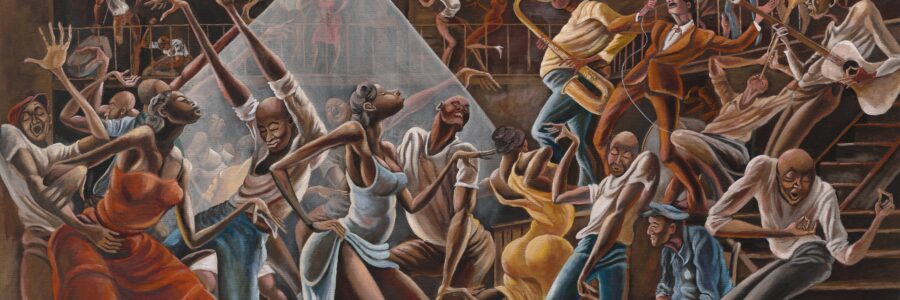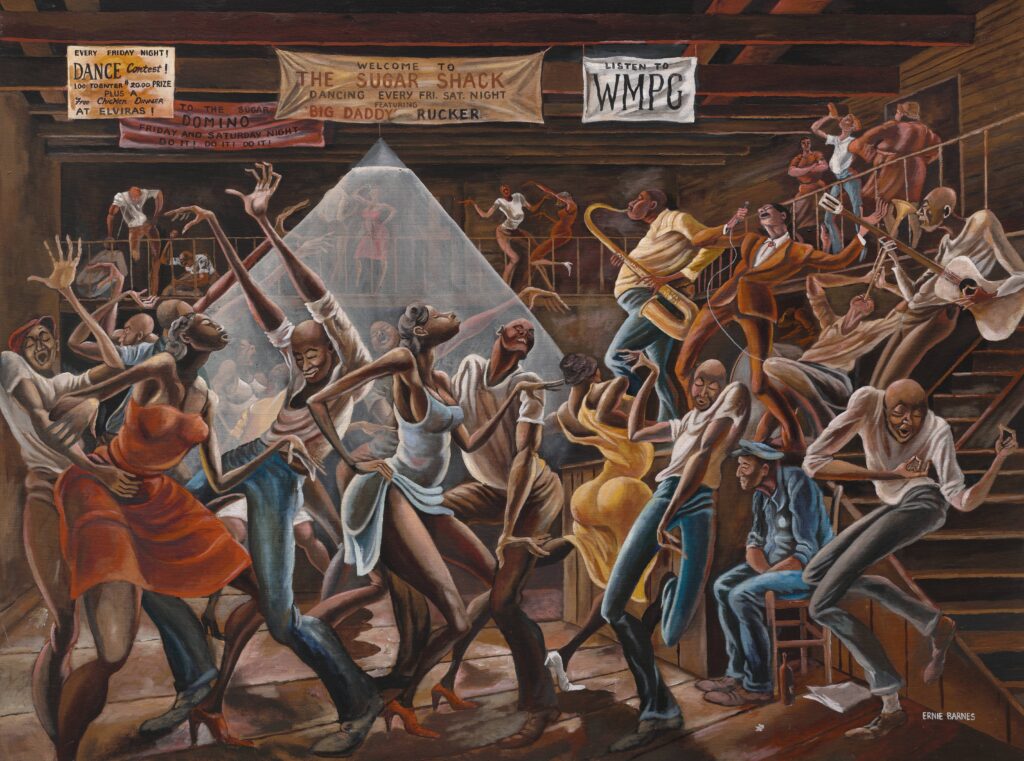
Ernie Barnes’ The Sugar Shack Goes on View at the Museum of Fine Arts, Houston June 15
Houston collector Bill Perkins, who acquired the iconic 1976 work at auction last month, has placed the painting with the MFAH through December
The Museum of Fine Arts, Houston will place on view The Sugar Shack, Ernie Barnes’ iconic 1976 painting of vibrant, ecstatic figures dancing in a crowded Black music hall in segregated mid-century North Carolina.
The painting is on loan to the MFAH through December 31 from Houston collector Bill Perkins, who acquired The Sugar Shack at auction last month.

“I want to thank Bill Perkins for his generous loan to the Museum of Ernie Barnes’ extraordinary painting,” commented Gary Tinterow, Director, Margaret Alkek Williams Chair, of the Museum of Fine Arts, Houston. “The Sugar Shack will take pride of place in the Museum’s newest home for modern and contemporary art, the Nancy and Rich Kinder Building, where it can be appreciated by our visitors in the context of works in the permanent collection.”
“Lara and I are thrilled to be able to share this phenomenal painting with all of Houston,” commented Bill Perkins. “As I’ve said many times, acquiring The Sugar Shack was for me the realization of a childhood dream. I know that Ernie Barnes’ masterwork will be as inspirational for all those who will see it as it has been for us.”
Barnes painted two versions of The Sugar Shack. The first was acquired by Motown star Marvin Gaye, who featured it on the cover of his 1976 album I Want You. Barnes created this second version, in 1976, and the painting gained still wider currency when it was added to the end credits of the groundbreaking 1970s CBS sit-com Good Times, which centered on a Black family in the Chicago housing projects with an artist-son named J. J., played by Jimmie Walker.
Barnes frequently recalled the inspiration for the painting as a childhood memory of sneaking into a local dance hall called the Armory. “It was the first time my innocence met with the sins of dance,” he told an interviewer in 2008. The vivid image, with its dynamic, elongated figures dominating the packed space of a dance floor and illuminated by a cone of light from a single bulb, reflects what became known as the Black Romantic tradition, as writer Jasmine Sanders has noted: Barnes’ “mode of kinetic figuration, animating black existence with just enough verisimilitude, influenced a generation of black portraitists; meanwhile, The Sugar Shack itself became a staple in black homes, its popularity embodying an act of communal creative expression on par with the painting’s exultant scene.”
About Ernie Barnes
Ernest Eugene Barnes, Jr. (1938-2009) was born in Durham, North Carolina, at the height of Jim Crow. His family lived in what was then called “The Bottom,” a community near the Hayti District of the city. His father worked as a shipping clerk for Liggett Myers Tobacco
Company in Durham. His mother oversaw the household staff for a prominent Durham attorney and Board of Education member, who encouraged Barnes to read art books and listen to classical music.
By the time Barnes entered the first grade, he was familiar with the work of Toulouse-Lautrec, Delacroix, Rubens, and Michelangelo. Although initially not athletic, by his senior year in high school, Barnes became the captain of the football team. Barnes enrolled at the all-Black North Carolina College at Durham (formerly North Carolina College for Negroes, now North Carolina Central University) majoring in art on a full athletic scholarship. After college, he played professional football into the mid-1960s, before devoting himself fulltime to his painting, in Los Angeles.
Photo courtesy of MFAH